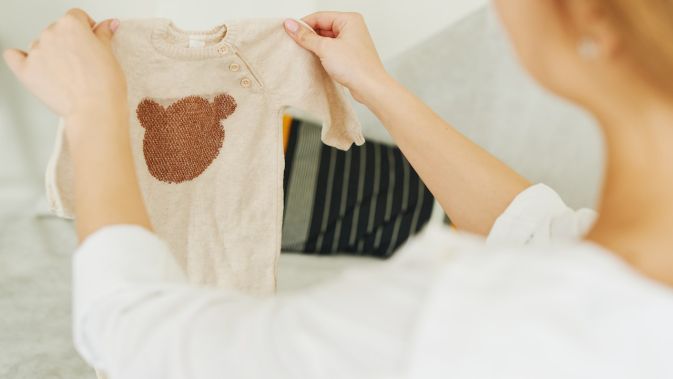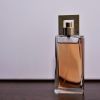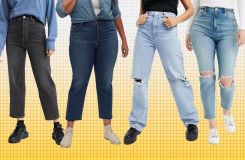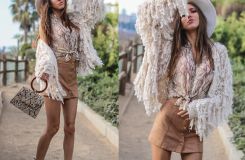
Many expectant mothers find it difficult to refrain from registering for an endless supply of adorable baby clothes. On the one hand, accidents do happen, and it's helpful to have a few changes of clothes on hand. On the other hand, your baby isn't going to stay the same size for long because of his or her rapid level of growth.
Now, the question is, how many outfits does your newborn really need?
A Guide to Putting Together Your Newborn's Wardrobe
When determining how many baby clothes you'll require and how you should add them to your registry, there are a few things you should keep in mind before making your decisions.
Consider Laundry
The number of items of baby clothing you'll need on hand is determined by your access to laundry (and how frequently you do it).
Our list of must-haves for a new baby is based on the idea that you do a few loads of laundry a week. If this is not the case, you may require more or less clothing. Here's how to make changes:
If you only plan on doing laundry once a week, divide the figures below by two.
Reduce the numbers below by half if you will be doing laundry every day.
What About Sizing for Newborn Clothes?
Since it's difficult to predict how big your baby will be at birth and how fast they'll grow, figuring out sizing and how many pieces in each size to add to your registry can be challenging. Take into account the following:
Go big:
If your baby weighs more than eight pounds, you may need to start dressing them in 0-3 month clothing. (And if they're on the smaller side, they probably won't fit into newborn sizes for more than a couple of weeks.) Choose a few essentials from the newborn section, and then move on to the 0-3 month section, as the clothing in that range will fit infants weighing up to about 12 or 13 pounds.
Mix:
Various baby clothing manufacturers have varying sizing structures. It's important to know that different brands have different sizing, with some being more accommodating to babies who are heavier than average and others being more suitable for babies who are tall and lean. Given that you can't predict your child's exact body type before birth, it's best to stock up on a variety of brands' infant and toddler garments.
Get Organized
Teeny, tiny baby clothes are adorable—but they're also easy to misplace. Organizing your baby's wardrobe by size is the best way to know what is currently fitting and what is available in the next size when the time comes.
Drawer dividers are an excellent investment if you store the majority of your baby's clothes in a dresser. They help keep everything in one place (hello, tiny baby socks) and can be organised by clothing type, size, or any other way you want.
If you're storing your child's wardrobe in a closet, those little sturdy hanging signs separate clothes into sizes so you can easily see what you have and are less likely to forget about clothes before they're too small.
When it comes to baby clothes, another organisational tip is to swap out items as they become too small. Keeping on top of this onerous task will go a long way toward assisting you in managing your baby's wardrobe. Keep a storage bin on hand so you always have somewhere to stash them; then you can decide whether to keep them or pass them on to someone else.
An Example of a Baby Clothes Wish List
The typical number of each item of clothing you'll need to have on hand for your newborn is broken down here. Items to include for both summer and winter babies, as well as some for special occasions, are included.
7 bodysuits/rompers
Bodysuits are available in both long and short-sleeve variations, making them versatile enough to be worn as a standalone item of clothing during the warmer months or as a foundational piece of clothing during the colder months. Washing two loads per week will ensure that you never run out of clean ones if you have seven.
A kimono-style bodysuit (also known as a side-snap bodysuit) or two should be added to the baby's wardrobe for the first week or so after birth, when the umbilical cord naturally falls off.
3-5 Pants
Although babies do not need to wear pants, having a few pairs on hand to pull over bodysuits can help keep legs warm when it's cold outside.
4 pairs of sleepers, footies, or gowns.
Sleepers and footies are useful for more than just sleeping; they can also be worn during the day. In colder climates, they can also be used at night with a swaddle. And a gown is an excellent addition to any wardrobe. Especially during the first few months, when you need something quick and simple for frequent diaper changes.
2 Caps
Beanie-style hats are essential for keeping your baby warm in the early weeks and months. (Remember, no hats while the baby is sleeping!) Begin with two—one for your child to wear and one for the washing machine. Fleece hats are also useful in colder climates.
5 Socks Pairs
Even in the summer, you'll want to keep your baby's feet warm with socks.
Buy them all in the same colour so you don't have to match tiny socks. Add two extra pairs if your baby is due in the winter.
2-3 Swaddles
Swaddles aren't technically clothing, but many babies spend a lot of time in them. Why? Many babies prefer to be swaddled for the first few months because it mimics the womb and prevents their startle reflex from waking them up. Many nights, you may find that you simply put the baby in a diaper and swaddle for sleep.
Tip: Swaddle the baby in a blanket (here's a how-to video) or a 2-in-1 swaddle to make things easier.
2 sweatshirts or sweaters
When there's a chill in the air, a cardigan or zip-up hoodie is ideal, and it's simple to remove if the baby gets too warm.
A pair of mittens
Warm mittens will keep little hands warm. This particular pair is particularly clever: the cord holds the pair together so that one of the mittens does not go missing.
Even if it isn't winter, cotton mitts can come in handy with newborns to keep them from scratching themselves with their razor-sharp new nails.
1 Coat for Winter
Winter babies should be dressed in at least one layer of extra-warm outerwear. In warmer climates, a winter coat with warm pants is sufficient, but in colder regions, get full-body outerwear (such as a bunting sack—a type of baby sleeping bag—or stroller bunting) to ensure the baby stays warm in any weather.
2 pairs of slippers or booties.
Babies don't need shoes (in fact, they shouldn't wear them until they can walk), but booties are great for extra warmth.
1 hat for the sun
A sun hat is essential for being outside on hot days. Choose one with a wide brim that fits snugly and will not fall off. This one also has an adjustable toggle for a custom fit as baby grows.
2 light-weight blankets
Shade is the best way to protect your new baby from the sun, and the simplest way to do so without overheating the baby is with a light cotton or muslin blanket. Drape it over your stroller, car seat, or carrier, leaving plenty of room for air to circulate.
Was this helpful?
Kingerlon collects & utilizes cookies from third-parties & affiliate networks to improve user experience. If you buy a product or service after clicking on one of our links, we may get a commission.










